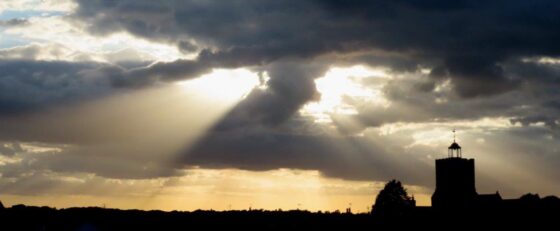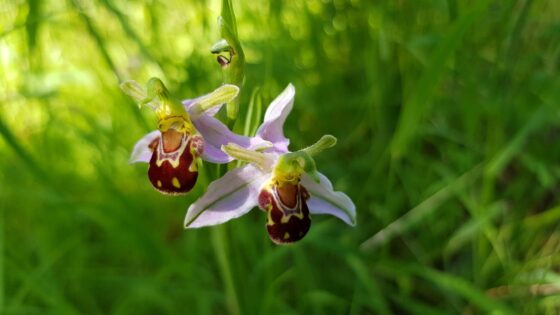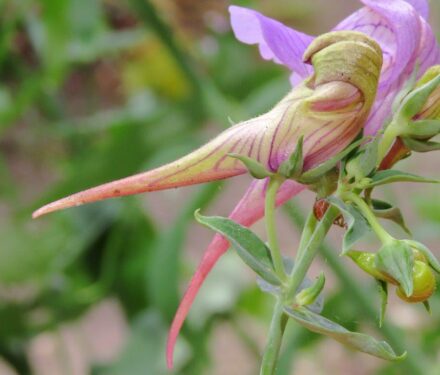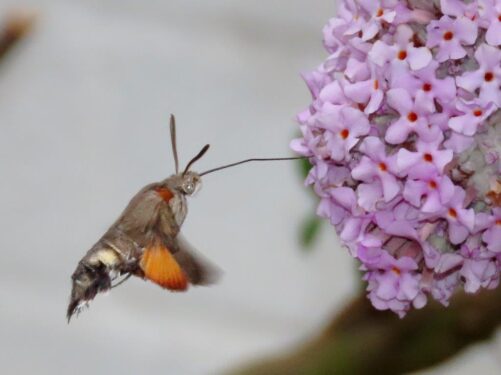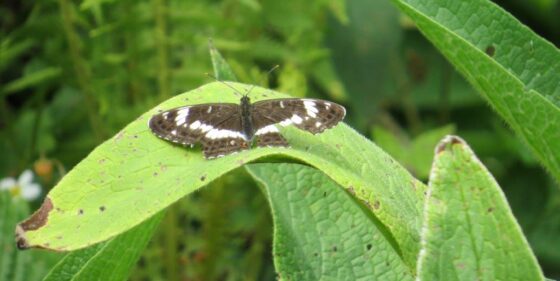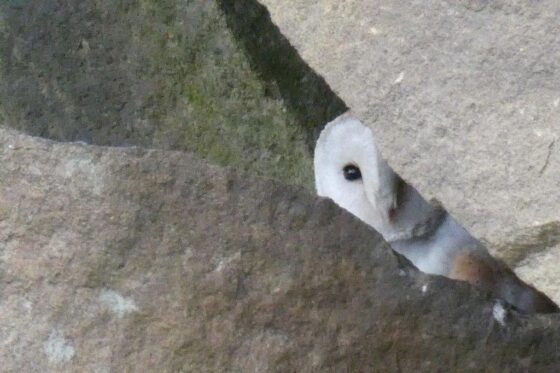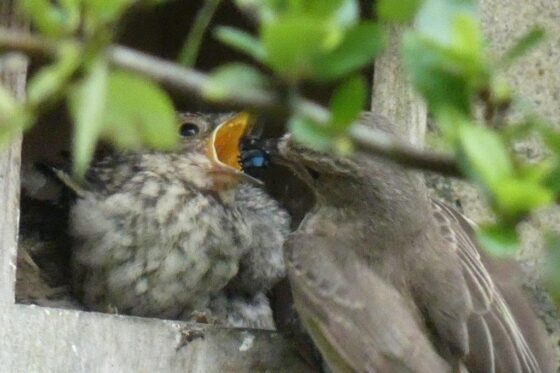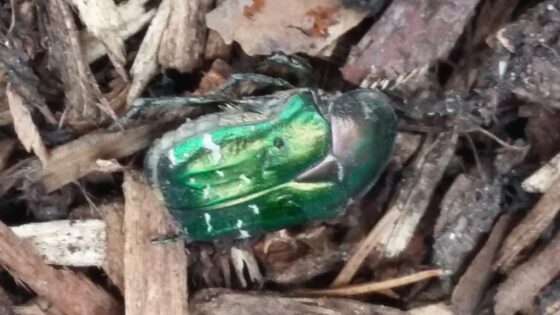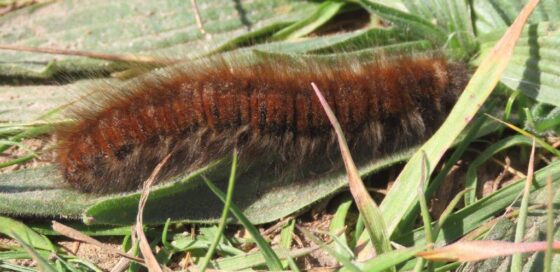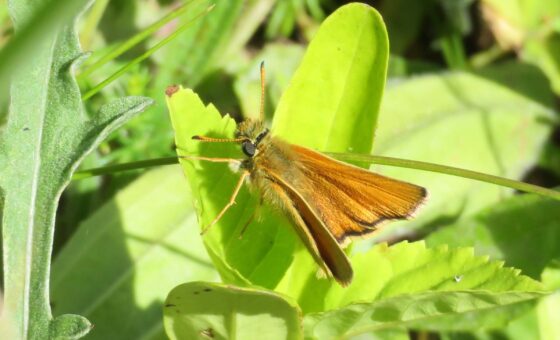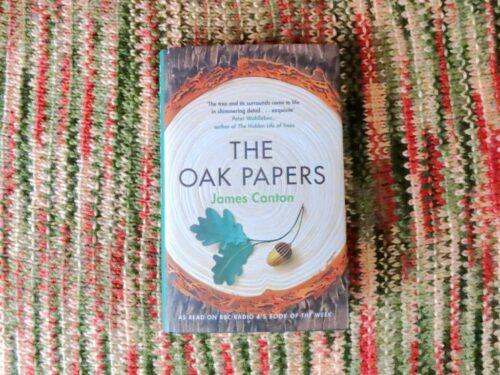Here we are again! Gradually returning to normal activities, with caution! As always we are indebted to all our Nature Watchers who have contributed musings and photos…it’s good to know that you are out there in this, at times, difficult world.
Thought we would start with plants for a change – and thanks to an eagle-eyed friend we have this wonderful picture of a Bee Orchid to show you. Growing in an area in north Wivenhoe, it has in recent years struggled to hang on in its former stronghold. We hope that management in this area can be improved to allow these rather amazing things to continue. Orchids are truly ‘odd’ in my view – their lifestyles, and looks make them unique in the plant world. We have been helping to get a book about Orchids ready for production, so if anyone would like to know more about these wacky things, we can recommend the WILDGuides field guide which will be published soon. We can provide details of it if you are interested – just let us know.
We saw this other decidedly-odd plant when at Beth Chatto’s garden recently. Why is the plant Linaria triornithophora so named…where are the ‘three birds’? Well, peering through a camera revealed all when the unopened buds magically and mischievously mutated into budgies!
Whilst there we were entranced by this amazing critter, a Hummingbird Hawk-moth. This little beastie had flown all the way from Europe to join us and she was mighty hungry – enjoying the nectar, sipping it with her long tongue.
Still in Beth Chattos – and why not, now that it is again open – we were also sent this lovely shot of a White Admiral, now fully re-established around us after local extinction in the 1950s. We even saw one flying around the unpromising surrounds of our Shipyard car park.
Birds are all around and we are pleased that it isn’t just us that likes Starlings – a nature lover in Wivenhoe told us about her lovely flock of baby Starlings visiting her garden and that she was kept busy refilling feeders and bird baths. She also had a Mr and Mrs Stag Beetle paying regular visits. Talking of stags, someone we know and love locally, although living near a known Stag Beetle hide-out had not actually ever seen any, but she told us about an exciting encounter recently whilst walking
‘…I saw something astonishing. Right in front of me was a stag beetle suspended in flight. I stood riveted while it flew around me coming within a foot of my face several times backwards and forwards, up and down, round and round for about 5 minutes. I was waiting for it to land but it didn’t and then, eventually, flew up higher and went over the top of the bushes. It was a beautiful specimen and I’m kicking myself for not having my phone with me to take a picture! Really amazing and thrilling.‘
Follow that…..
A couple of fellow nature addicts in Yorkshire have recently treated themselves to a new camera – with exciting results. Take a look at these close ups of Barn owl and a Spotted Flycatcher feeding her young. How we would love to still see flycatchers in Essex!
A rather unfortunate (headless!) Rose Chafer was discovered In Wivenhoe last week. Not sure what could have decapitated it, but Magpies are renowned for attacking our Stag Beetles.
And a beautiful Fox Moth caterpillar was seen in Dovercourt. These hairy beasties are beautiful, but hairy caterpillars in general aren’t good to handle as they can be irritating to sensitive skins.
Skippers are interesting little things – are they butterflies or moths? A bit of a mix of the two – though classed as butterflies. Here in Essex we have three, very similar looking species – the Essex ( which lives in all manner of counties!), Large and Small Skippers. How can you differentiate? Well, rule of thumb is that the ‘Large’ is bigger than the rest (no surprises there) and somewhat blotchy, but (to quote our Insect book), ‘the Essex Skipper (has a) rather grey underside and the antennal tip is black underneath and obviously clubbed, whereas in the Small Skipper it is more tapered and orange underneath’. Pictured is an Essex one (photoed in Sussex)!
A lovely picture-in-words was sent to us from our friend in Suffolk..
‘(today I have been) watching our marjoram trembling under an army of honey & bumble bees and hoverflies, plus some newly-minted red admirals and endless tortoiseshells. Before this, they had worked their way through our explosion of red poppies, elegant lavender, and then our purple carpet of thyme. On today’s river walk was a flat-bodied chaser, demoiselles & blue neon damselfly. On the hill, weld, knapweed, mallow & scabious created some colourful patches. Swifts screaming overhead added the final flourish.’
Feels as if I was there!
Before we go we must draw your attention to a superb new book that has just been published. The Oak Papers by Dr James Canton (a good friend and fellow nature enthusiast) is a personal journey to discover the wonders of Oak. AND it is to be aired on Radio 4 as Book of the Week during the first week of August. Not to be missed!
As most of you will know we have decided to resume our Botany and Bug Walks (albeit in a minimal format), so it is likely that we will be concentrating from now on sending out an illustrated report from these. However, DO please keep sending us your contributions, and we will still do an occasional ‘Nature Newsletter’, continuing to ‘spread the word’.
As always, happy nature watching.
ADDITIONAL IMAGES by Val Appleyard, Patrick Eady, Andrea Williams, Sue Minta and Debbie Taylor.
